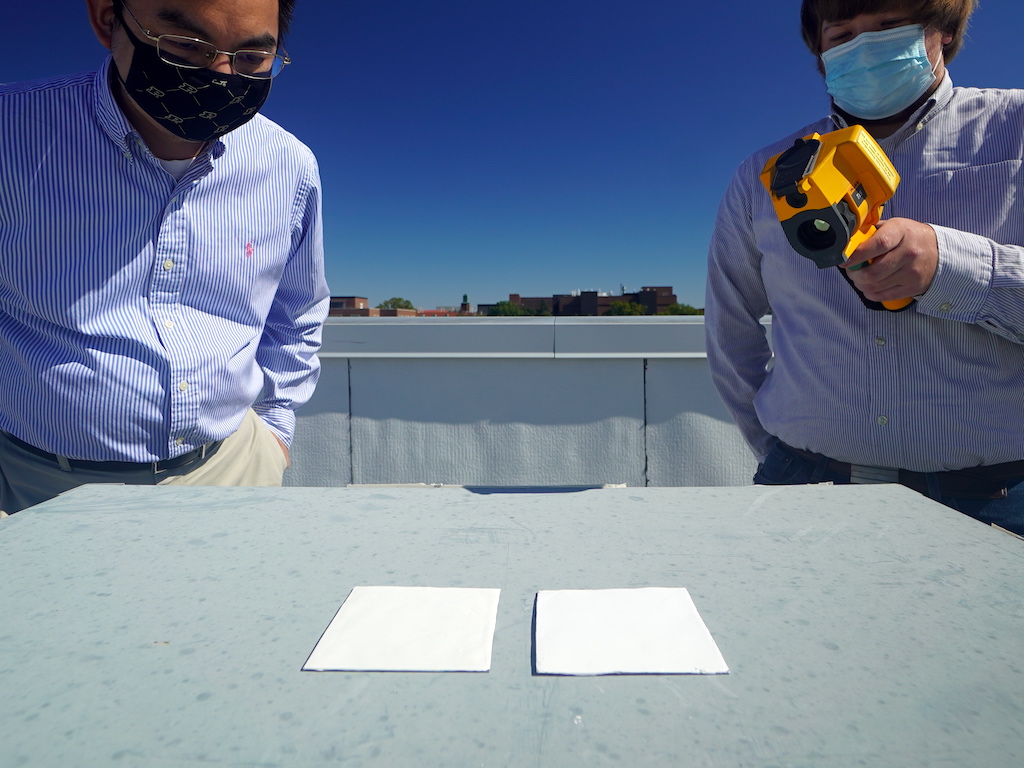3 Mins Read
Engineers have developed a new paint formulation that could literally cool buildings down, reducing the need to use air conditioning and lowering our carbon footprint. Coating rooftops with the ultra-white paint could even be “more powerful than central air conditioners”, say the scientists.
Scientists have now pushed the limits on how white paint can possibly be, creating the “whitest paint yet” that could keep surfaces cooler compared to previous paint formulations. Detailed in a new paper published in the journal ACS Applied Materials & Interfaces, Purdue University engineers designed the paint to help curb climate change.
According to their research, the patent-pending ultra-white paint could help buildings cool off so much that it’ll reduce the need to use air conditioning, which currently accounts for around 20% of the total energy use in buildings globally.
“If you were to use this paint to cover a roof area of about 1,000 square feet, we estimate that you could get a cooling power of 10 kilowatts. That’s more powerful than the central air conditioners used by most houses,” explained Professor Xiulin Ruan of Purdue University’s mechanical engineering department.
This new ultra-white paint is essentially the white equivalent of the “blackest black” currently known to Earth, which absorbs around 99.9% of visible light.
If you were to use this paint to cover a roof area of about 1,000 square feet, we estimate that you could get a cooling power of 10 kilowatts. That’s more powerful than the central air conditioners used by most houses.
Professor Xiulin Ruan, Purdue University
The new whitest paint reflects up to 98.1% of sunlight, sending infrared heat away from the surface coated with the formulation. Comparatively, commercial white paints that are in widespread use on the market reflect an estimated 80% of sunlight, and can get warmer rather than cooler over time.
To develop the “whitest paint yet”, the researchers used a very high concentration of barium sulfate, the same compound that is used to make photo paper.
“We found that using barium sulfate, you can theoretically make things really, really reflective, which means that they’re really, really white,” said co-author Xiangyu Li, a postdoctoral researcher at the Massachusetts Institute of Technology (MIT) who worked on the project as a PhD student at Purdue.
Joseph Peoples, a Purdue PhD student in mechanical engineering, added that this new paint formulation contains particles that are all different sizes. “A high concentration of particles that are also different sizes gives the paint the broadest spectral scattering, which contributes to the highest reflectance,” he explained.
With these two features, the engineers were able to demonstrate that the paint could keep surfaces 19 degrees Fahrenheit cooler than their ambient surroundings at night outdoors. Even in hot conditions, such as under strong sunlight at noon time, the paint keeps surfaces 8 degrees Fahrenheit below their surroundings even in hot conditions.
According to the research team, the paint is the result of more than six years of research that builds on many attempts to create a white paint that could cool surroundings enough to act as an alternative to air conditioners.
Scientists have previously warned that our rising use of air conditioning is posing one of the biggest threats to combating climate change, putting the world on an insidious cycle of using the energy-intensive machines to cool us down from global heating, but putting out more emissions that exacerbates the crisis.
Lead image courtesy of Purdue University.




